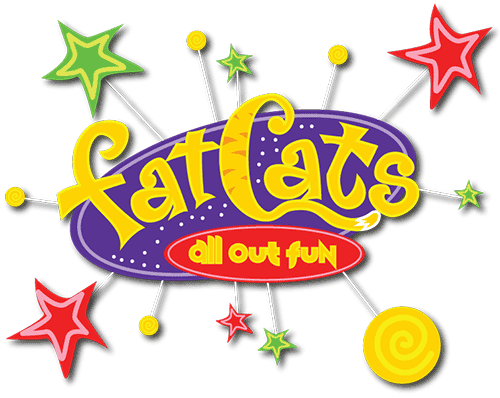Stan Lee, Marvel Comics visionary, dead at 95
Published at(CNN) — Stan Lee, the colorful Marvel Comics patriarch who helped usher in a new era of superhero storytelling — and saw his creations become a giant influence in the movie business — has died.
He was 95.
Kirk Schneck, an attorney for Lee’s daughter, tells CNN the comic giant died Monday morning. The cause of death is not yet known, according to Schneck.
Lee began his career at what was then Timely Comics in 1939. Over the years he was a writer, editor and occasional illustrator. But, bored with the output, he was preparing to leave the company when history took a sudden turn.
For many years, the business had been dominated by DC (then National) Comics, creators of Superman, Batman, Wonder Woman and the Green Lantern.
In the late ’50s, DC started reimagining its heroes — kicking off what comics historians call the “Silver Age” of the business — but those figures were still, largely, otherworldly and two-dimensional, living in made-up places such as Metropolis and Gotham City.
In the early ’60s, Lee was asked to come up with a team of superheroes to compete against DC’s Justice League. With the notable help of artists such as Jack Kirby and Steve Ditko, he helped instigate a revolution, though Lee didn’t see it that way at the time.
“If my publisher hadn’t said ‘let’s do superhero stories,’ I’d probably still be doing ‘A Kid Called Outlaw,’ ‘The Two-Gun Kid’ or ‘Millie the Model’ or whatever I was doing at the time,” he told CNN in 2013.
Marvel revitalized the comics business with a series of flawed, more human superheroes. Its figures lived in the real world — a few were based in New York City, with all its dirt and clamor — and struggled with everyday challenges, whether it was paying the rent or wondering about their purposes in life.
First came the Fantastic Four, a superhero team probably most famous for the grumpy, rock-skinned Thing. Following that success Lee and Marvel introduced such characters as Spider-Man, the Hulk, Iron Man, Thor, the X-Men and Daredevil.
These new superheroes — all created in a burst between 1961 and 1964 — were hugely popular and allowed Marvel to surpass DC in both sales and fashionableness.
Spider-Man, in particular, became the imprint’s signature character: a neurotic photographer named Peter Parker who, after being bitten by a radioactive spider, develops spider-like powers. Parker was forever clashing with newspaper editor J. Jonah Jameson (an angry, cigar-chomping martinet who was no Perry White), wondering about his relationship with Mary Jane Watson and worrying about his fragile Aunt May. Crime fighting was the least of his concerns.
“I never thought that Spider-Man would become the worldwide icon that he is. I just hoped the books would sell and I’d keep my job,” Lee said in 2006.
Many of the characters were developed for television with varying degrees of success. But it was the emergence of the “Marvel Universe” in the movies, especially with the “X-Men” franchise and the Sam Raimi-directed “Spider-Man” (2002), that truly made the brand ubiquitous. In 2009, the Walt Disney Company purchased Marvel Entertainment — the licensing arm of the comic-book brand — for $4 billion.
By that point, Lee had long since become more of a company figurehead rather than a writer and editor in the day-to-day trenches. He became the company’s editorial director and publisher in 1972 and eventually immersed himself in spreading the Marvel gospel (often with the exclamation, “Excelsior!”) He’s had bit parts in most of the films featuring the company’s characters.
He was occasionally criticized for egotistically cheerleading for himself as much as Marvel. “Stan the Brand,” the authors of “Stan Lee and the Rise and Fall of the American Comic Book” called him, pointedly.
It wasn’t all joy for Lee. Though the success of the movies made the characters worth billions, Lee maintained that he saw little of that wealth. Even so, he saw more than artist Kirby, who many comics historians credit with molding a number of characters. Over the years, the credit for the characters — and, therefore, the profits — has been the subject of court cases, some involving Kirby or his family.
The characters’ impact, however, is indisputable.
Marvel characters are known the world over, and its films have become huge successes.
“I used to be embarrassed because I was just a comic-book writer while other people were building bridges or going on to medical careers,” he told the Washington Post. “And then I began to realize: entertainment is one of the most important things in people’s lives. Without it they might go off the deep end. I feel that if you’re able to entertain people, you’re doing a good thing.”
He retained a lifelong passion for the medium he helped mold, and wouldn’t tolerate disdain.
“Comic book should be written as one word. So from now on, I want you to remember that,” he said in a 2012 YouTube video. “They are not funny books. They are not comic books, they are comicbooks! Remember that, or incur my wrath.”
Lee filed a suit against his former company, Pow! Entertainment in May, alleging it conspired with two employees to steal his identity.
The company announced in July that the suit had been dismissed by Lee.
“The whole thing has been confusing to everyone, including myself and the fans, but I am now happy to be surrounded by those who want the best for me,” Lee said in a statement. “I am thrilled to put the lawsuit behind me, get back to business with my friends and colleagues at POW! and launch the next wave of amazing characters and stories!”
The-CNN-Wire
™ & © 2018 Cable News Network, Inc., a Time Warner Company. All rights reserved.
Thanks to Fat Cats in Rexburg for providing screenings for movie reviews on EastIdahoNews.com.





